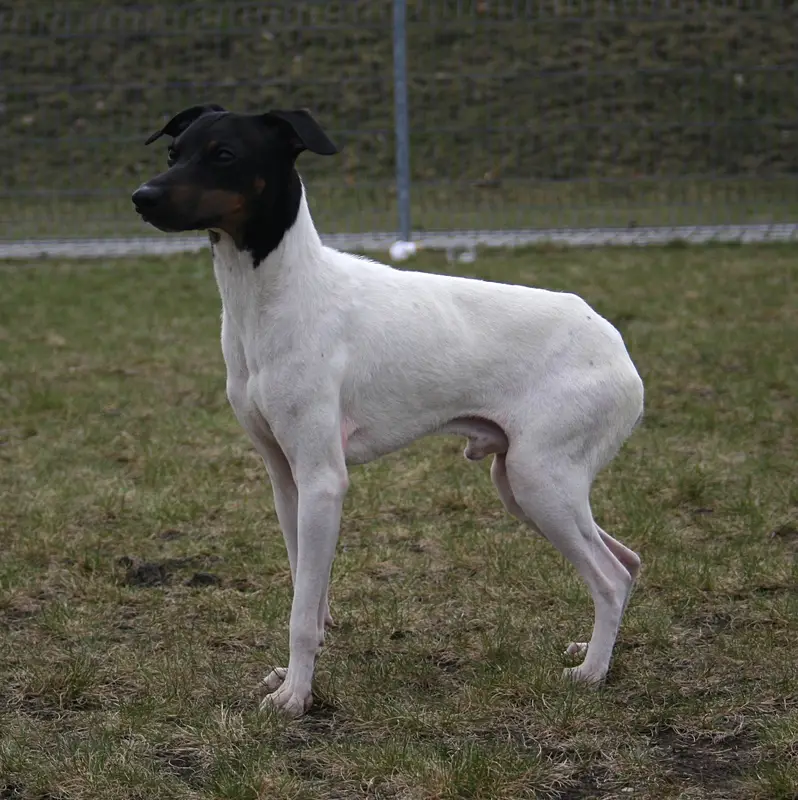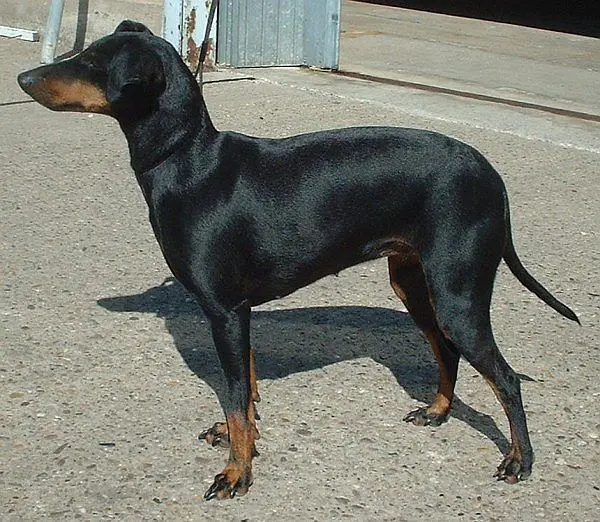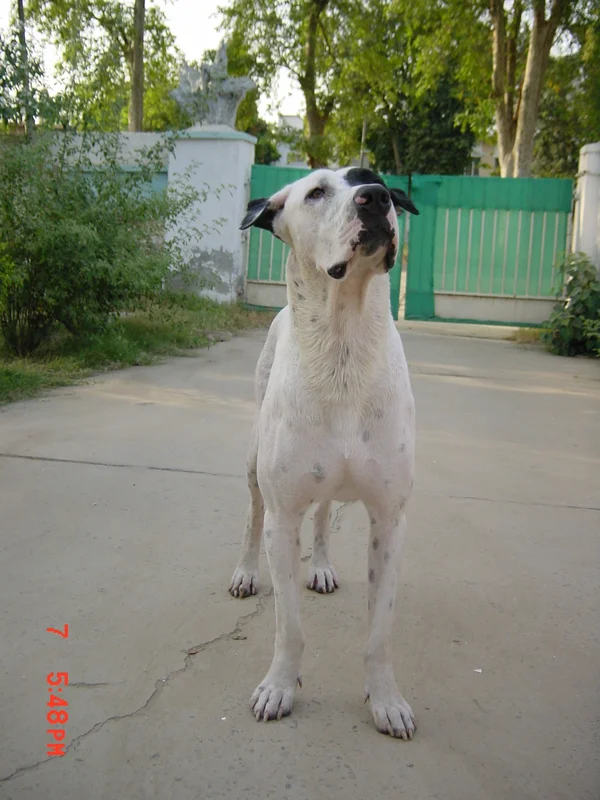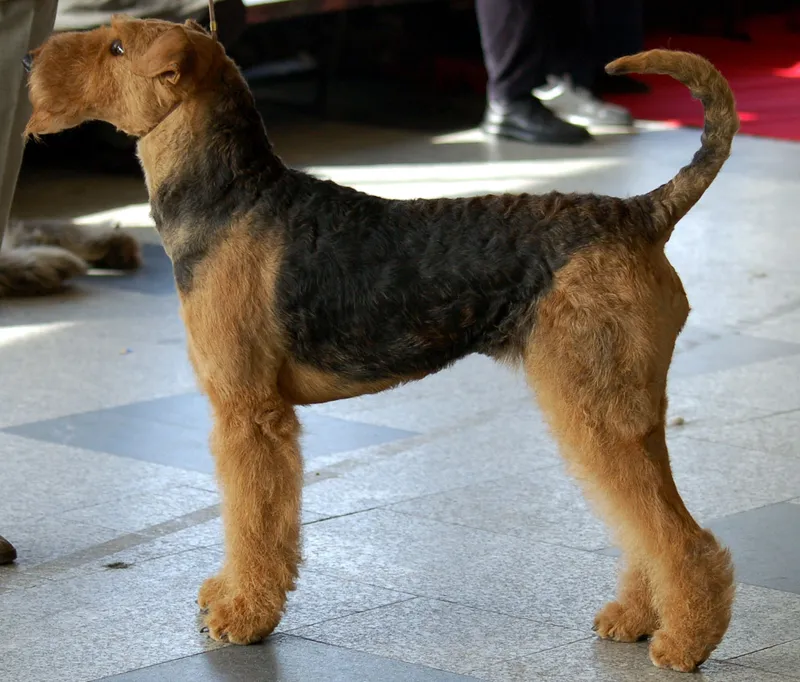Rat Terrier
The Rat Terrier is a lively and intelligent breed known for its exceptional hunting skills and affectionate nature. With a rich history as a farm dog, they are adaptable, trainable, and make excellent family pets.
Overview
🐕Breed Overview
✨Key Traits
💡What Makes Rat Terrier Special
One of the standout traits of the Rat Terrier is their remarkable intelligence, which allows them to learn commands and tricks quickly. They are also known for their playful nature, often engaging in games and activities that challenge their agility and speed.
Their adaptability makes them suitable for various living situations, from farms to apartments, as long as they receive adequate exercise and companionship. Rat Terriers are also recognized for their strong hunting instincts, making them excellent vermin control dogs.
Their affectionate demeanor and loyalty to their families further enhance their appeal as companions.
The Rat Terrier is a spirited and intelligent breed that has captured the hearts of many as both a hunting companion and a family pet. Originating in the United States, this versatile dog was developed from a mix of various terrier breeds brought over by British immigrants in the late 19th century. Known for their exceptional vermin control abilities, Rat Terriers were once a common sight on farms, where they excelled at catching rats and other small game.
Their playful and affectionate nature makes them a beloved family member, while their keen intelligence ensures they are easily trainable. With a range of coat colors and sizes, including miniature and standard varieties, Rat Terriers are adaptable to various living situations, from rural homes to urban apartments. They thrive on regular exercise and mental stimulation, making them an ideal choice for active families.
Their friendly disposition and compatibility with children further enhance their appeal as family pets. Whether participating in agility competitions or simply enjoying playtime in the yard, Rat Terriers are always ready for fun and adventure. Their rich history and unique characteristics make them a breed worth considering for anyone looking for a loyal and energetic companion.
🎉Fun Facts
A Rat Terrier once cleared a barn of 2,500 rats in just seven hours.
President Theodore Roosevelt owned a Rat Terrier named Skip, who was known for his exceptional hunting skills.
Rat Terriers are known for their versatility and can excel in various dog sports, including agility and earthdog trials.
Breed Characteristics
Family & Friends
Good Behavior
Get Up & Go
Household Harmony
Temperament & Personality
✨Key Traits
🐕Core Temperament
The Rat Terrier is a lively and affectionate breed that thrives on human interaction. They are known for their playful nature and strong desire to please their owners.
While they have a terrier's spirited personality, they also possess a calm demeanor and can relax comfortably in a home environment. Rat Terriers are generally good with children and can get along well with other pets if properly socialized.
Their intelligence and sensitivity make them trainable, but they require consistent guidance and socialization from an early age to develop into well-adjusted adults.
💫Personality Profile
Rat Terriers are known for their cheerful and playful disposition. They are highly intelligent and eager to please, making them relatively easy to train.
Their energetic nature means they thrive in active households, where they can engage in play and exercise regularly. While they are friendly and affectionate with their families, they may be reserved around strangers.
Their social sensitivity allows them to pick up on their owner's moods, making them attentive companions. Rat Terriers enjoy being involved in family activities and are known for their loyalty and protective instincts.
🔊Vocal Tendencies
Rat Terriers are generally not excessive barkers, but they will alert their owners to unusual sounds or the presence of strangers. Their vocalizations can vary from playful barks during playtime to more serious barks when they sense something amiss. While they may bark to communicate or express excitement, they are not known for being overly noisy, making them suitable for various living environments.
Affection & Social Traits
Energy & Activity
Communication Style
Care Requirements
🏃♂️Exercise Requirements
Daily Exercise
Rat Terriers are energetic dogs that require regular exercise to maintain their physical and mental health. Ideally, they need at least 30 to 60 minutes of exercise each day, which can be broken down into multiple sessions.
Activities such as brisk walks, playtime in the yard, or engaging in dog sports like agility or flyball are excellent for this breed. Puppies may require shorter, more frequent play sessions to accommodate their developing bodies, while senior dogs may benefit from gentler activities to avoid strain.
Regular exercise helps prevent obesity, supports cardiovascular health, and reduces behavioral issues stemming from boredom or excess energy. Insufficient exercise can lead to destructive behaviors, anxiety, and weight gain, making it crucial for owners to establish a consistent exercise routine.
Preferred Activities
🏠Living & Adaptability
Space Requirements
Rat Terriers are adaptable and can thrive in various living environments, from apartments to houses with large yards. However, they do require space to move and play.
For apartment dwellers, daily walks and playtime in nearby parks are essential to meet their exercise needs. Owners should ensure that their living space is safe and stimulating, providing toys and activities to keep the dog engaged.
Lack of space can lead to boredom and destructive behavior, so it's important to create an environment that allows for both physical activity and mental stimulation.
Climate Preference
🍲Feeding Guide
Schedule
Food Types
Portion Size
Special Nutritional Needs
Rat Terriers do not have specific dietary restrictions, but it's important to provide a balanced diet rich in protein to support their active lifestyle. Monitor for any food sensitivities, and consult with a veterinarian for personalized dietary recommendations.
✨Grooming Requirements
Grooming Overview
The Rat Terrier has a short, smooth coat that requires minimal grooming. Regular brushing with a soft brush or rubber curry mitt will help remove loose hair and keep the coat healthy.
Bathing should be done as needed, typically every few months or when they become particularly dirty. Their ears should be checked regularly for dirt and wax buildup, and nails should be trimmed every few weeks to prevent overgrowth.
Overall, grooming is straightforward and low-maintenance for this breed.
Care Schedule
Brush weekly, bathe as needed, trim nails every 2-4 weeks.
Health Profile
⚕️Health Care
Regular veterinary care is essential for maintaining the Rat Terrier's health and longevity. Routine check-ups, vaccinations, and preventive treatments can help detect health issues early and ensure that the dog remains healthy throughout its life.
Owners should also be proactive in monitoring their dog's weight and activity levels, as obesity can lead to various health problems. Establishing a consistent healthcare routine is crucial for promoting optimal health.
Health Issues Overview
⏳Average Lifespan
Genetic Factors
Genetics play a significant role in the Rat Terrier's lifespan, with certain hereditary health issues being more prevalent in the breed. Responsible breeding practices that prioritize genetic diversity can help mitigate these risks.
Potential owners should seek reputable breeders who conduct health testing and provide health clearances for their breeding dogs. Understanding the genetic background of a Rat Terrier can help owners make informed decisions about their pet's health and longevity.
Living Conditions
The Rat Terrier's lifespan can be influenced by various environmental factors, including housing conditions, climate, and social interactions. Dogs that live in homes with ample space for exercise and play tend to be healthier and live longer.
A stimulating environment with regular mental and physical activities can enhance their overall well-being. Additionally, exposure to a variety of social situations can help reduce anxiety and behavioral issues, contributing to a longer, happier life.
🏥Common Health Issues
Patellar Luxation
Warning Signs
🔬Diagnosis
Veterinarians typically diagnose patellar luxation through physical examination and observation of the dog's gait.
💊Treatment
Surgical correction may be necessary in severe cases.
📝Management Tips
Maintain a healthy weight, provide joint supplements, and consult a veterinarian for treatment options if symptoms arise.
Hip Dysplasia
Warning Signs
🔬Diagnosis
X-rays are used to diagnose hip dysplasia, assessing the hip joint's conformation and stability.
💊Treatment
Surgery or medication may be required in severe cases.
📝Management Tips
Maintain a healthy weight, provide joint supplements, and engage in low-impact exercise.
Legg-Calve-Perthes Syndrome
Warning Signs
🔬Diagnosis
Diagnosis is made through physical examination and X-rays to assess the hip joint.
💊Treatment
Surgery is typically required.
📝Management Tips
Surgical intervention is often necessary to remove the affected femoral head.
🛡️Preventive Care
🔬Hip Evaluation
Evaluates the dog's hip joint for signs of dysplasia, which can lead to arthritis and mobility issues.
📅 Recommended for all breeding dogs and at least once in the dog's lifetime.
🔬Patellar Luxation Evaluation
Assesses the dog's knees for luxation, which can cause pain and mobility problems.
📅 Recommended for all breeding dogs and at least once in the dog's lifetime.
🔬Cardiac Evaluation
Checks for heart conditions that may affect the dog's overall health and longevity.
📅 Recommended annually for adult dogs.
Training
🧠Intelligence & Trainability
💪Work Drive
Rat Terriers have a strong work drive and thrive when given tasks to complete. Activities that engage their hunting instincts, such as earthdog trials or scent work, can provide the mental stimulation they need.
They also enjoy interactive games that challenge their problem-solving skills. Providing a variety of activities will help keep them happy and prevent boredom, which can lead to destructive behavior.
⚠️Training Considerations
Rat Terriers can be stubborn and independent, which may pose challenges during training. Their intelligence allows them to learn quickly, but they can also become easily bored or distracted.
To overcome these challenges, owners should use positive reinforcement techniques, such as treats and praise, to motivate their dogs. Consistency and patience are key, as is providing mental stimulation through interactive toys and games.
Socialization from an early age is crucial to help them adapt to various environments and reduce any potential behavioral issues.
📝Training Tips
Training a Rat Terrier can be a rewarding experience, as they are eager to please and respond well to positive reinforcement. Start with basic obedience commands, using treats and praise to encourage good behavior.
Incorporate fun activities like agility training or interactive games to keep them engaged. Consistency is essential, so establish a routine for training sessions.
Socialization is also important; expose your Rat Terrier to different people, animals, and environments to help them develop into well-rounded adults. Be patient and understanding, as they may have a stubborn streak.
History & Heritage
📜Origin Story
The Rat Terrier's origins are rooted in the practical needs of early American farmers who required a reliable dog for pest control. S. by British immigrants in the late 1800s, who mixed various terrier breeds to create a versatile working dog.
The name 'Rat Terrier' reflects their primary function of hunting rats and other small vermin. The breed gained popularity in the 1920s and 1930s, becoming a staple on family farms. However, with the advent of chemical pesticides in the 1950s, their numbers declined significantly.
Loyal breeders worked to preserve the breed, leading to its resurgence in recent years.
⏳Development History
The Rat Terrier's development can be traced back to the late 19th century when working-class British immigrants brought various small terrier breeds to America. These included the Manchester Terrier, Smooth Fox Terrier, and Bull Terrier, among others.
Initially bred for their speed and agility to catch vermin, the breed became popular on farms for their effectiveness in controlling pests. Over the years, they were crossed with Beagles and Whippets to enhance their hunting skills.
The breed was recognized by the United Kennel Club (UKC) in 1999 and by the American Kennel Club (AKC) in 2013, marking a significant milestone in their formal recognition.
🛡️Purpose & Historical Role
Originally bred as a farm dog and hunting companion, the Rat Terrier was valued for its ability to control vermin populations and hunt small game. Their versatility allowed them to excel in various roles, including as loyal family pets and watchdogs. Today, they participate in earthdog trials and agility competitions, showcasing their intelligence and agility.
🏺Cultural Significance
The Rat Terrier has played a significant role in American farming culture, serving as a loyal companion and effective vermin control dog. Their historical importance is highlighted by their use on farms throughout the United States during the early 20th century, where they were cherished for their hunting abilities.
The breed's connection to President Theodore Roosevelt adds to its cultural significance, as his dog, Skip, is often credited with popularizing the breed in the White House. Rat Terriers have also made appearances in literature and media, further embedding them in American culture.
Conservation Status
This breed is less common but has stable populations in certain regions.









